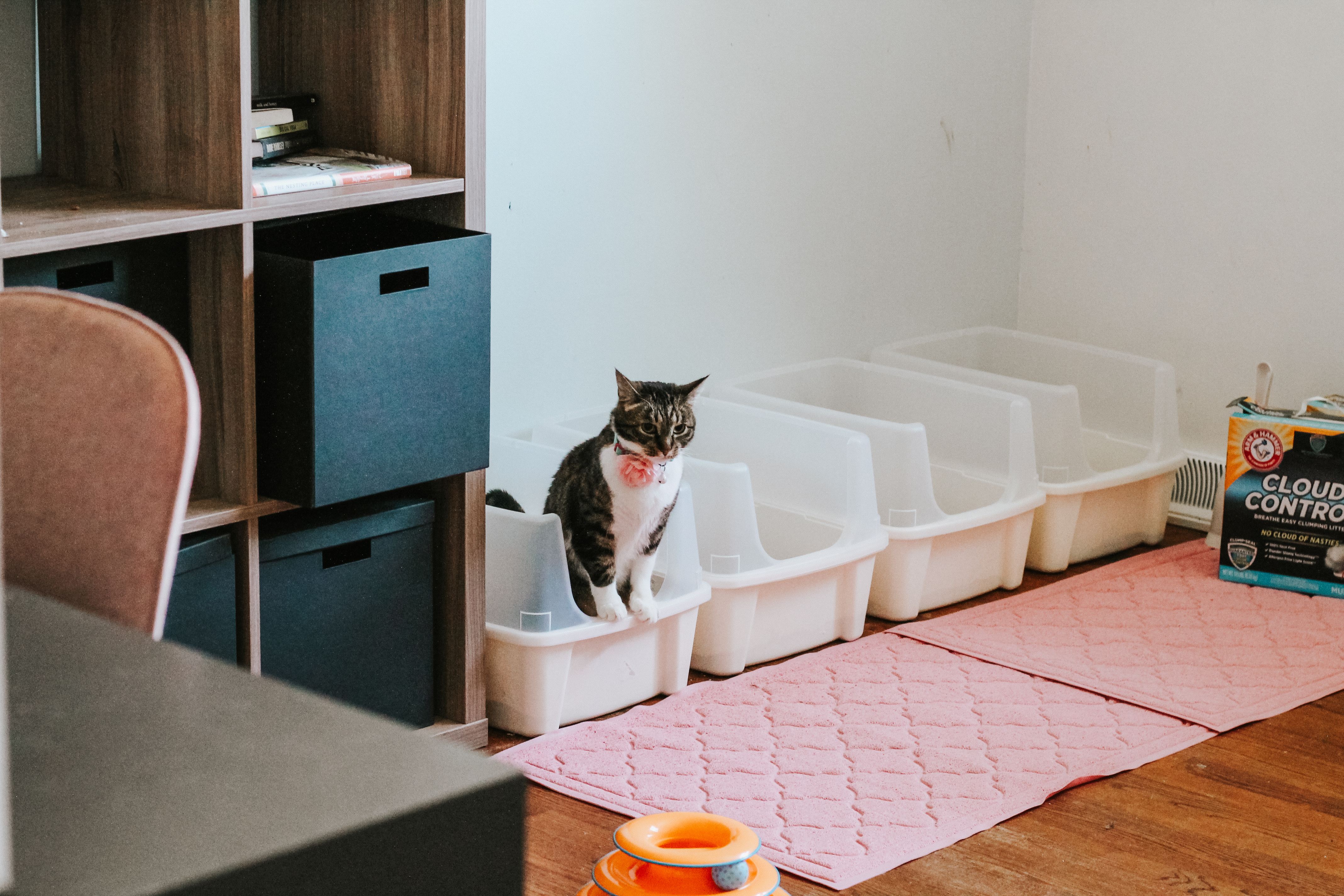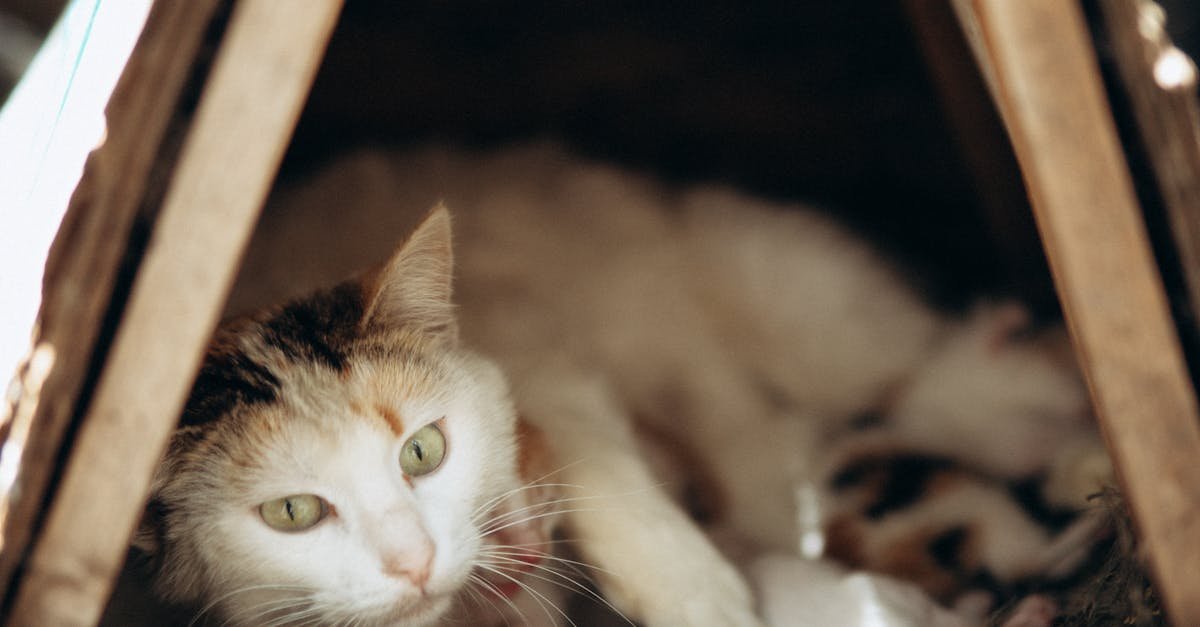
Cat Litter Solutions: Best Choices & Management Tips for Multi-Cat Homes
Estimated reading time: 8 minutes
Key Takeaways
- Choosing the best litter for multiple cats requires balancing absorbency, odor control, and ease of maintenance.
- Natural cat litter alternatives offer eco-friendly options but may have weaker odor control.
- Prevent tracking with litter mats, heavier litter, or top-entry boxes.
- Flushable cat litter is convenient but may pose plumbing risks.
- Follow the “n+1 rule” for litter boxes to prevent territorial issues.
Table of Contents
- Best Litter for Multiple Cats
- Natural Cat Litter Alternatives
- How to Stop Cat Litter Tracking
- Flushable Cat Litter: Pros and Cons
- Additional Multi-Cat Litter Management Tips
- Frequently Asked Questions
Best Litter for Multiple Cats
Choosing the best litter for multiple cats requires balancing absorbency, odor control, and ease of maintenance. Here’s what to look for:
Key Factors to Consider
- Absorbency: High-absorbency litters (like clay or silica gel) prevent pooling and keep boxes drier.
- Odor Control: Look for litters with baking soda, charcoal, or natural enzymes to neutralize smells.
- Clumping Ability: Clumping litters make scooping easier and reduce waste.
- Low Dust & Tracking: Dust-free formulas protect respiratory health and minimize mess.
- Cost & Maintenance: Premium litters may cost more upfront but last longer, saving money over time.
Top Litter Choices for Multi-Cat Homes
| Brand/Type | Key Features | Pros | Cons |
|---|---|---|---|
| World’s Best (corn-based) | Clumping, flushable, odor control | Eco-friendly, low dust | Some cats dislike texture |
| Arm & Hammer Clump & Seal (clay) | Strong clumping, odor-fighting | Budget-friendly, minimal tracking | Not biodegradable |
| PrettyLitter (silica gel) | Lightweight, health-monitoring | Low dust, soft texture | Doesn’t clump, pricey |
| ökocat (wood-based) | Natural, low tracking, biodegradable | Great for allergies | Weaker odor control |
Pro Tip: Follow the “n+1 rule”—provide one litter box per cat, plus an extra, to prevent territorial disputes. For more tips on creating a pet-friendly home, check out our guide.
Sources:
Natural Cat Litter Alternatives
For eco-conscious pet parents, natural cat litter alternatives offer a sustainable choice. If you’re interested in eco-friendly pet products, explore our recommendations for sustainable pet toys and biodegradable litters.
Popular Natural Litter Options
- Corn & Wheat: Clump well, biodegradable, and low dust.
- Walnut Shells: Naturally absorbent and odor-fighting.
- Recycled Paper: Dust-free and soft, but less absorbent.
- Pine Pellets: Great for odor control but don’t clump.
Pros & Cons of Natural Litter
✅ Eco-friendly – Breaks down faster than clay.
✅ Low dust – Better for cats with allergies.
❌ Variable clumping – Some types require frequent changes.
❌ Weaker odor control – May need extra deodorizers.
Best Brands:
- World’s Best (corn) – Clumps well, flushable.
- tufts + paw (plant-based) – Lightweight, low tracking.
Sources:
How to Stop Cat Litter Tracking
Litter scattered across your floors? Here’s how to stop cat litter tracking:
Common Causes
- Lightweight litter (sticks to paws).
- Open litter boxes (no barriers).
- Small granules (easily kicked out).
Solutions to Reduce Tracking
✔ Use Litter Mats – Textured mats trap granules before they spread.
✔ Switch to Heavier Litter – Paper or wood pellets track less.
✔ Try Top-Entry Boxes – Cats exit through a lid, shaking off litter.
✔ Trim Paw Fur – Less fur = less litter clinging to paws.
For more pet-proofing strategies, see our Ultimate Guide to Pet Safety.
Sources:
Flushable Cat Litter: Pros and Cons
Considering flushable cat litter? Weigh these pros and cons first.
Pros of Flushable Litter
✅ Eco-friendly – Reduces landfill waste.
✅ Convenient – Easy disposal for small amounts.
Cons of Flushable Litter
❌ Plumbing Risks – Can clog pipes or damage septic systems.
❌ Not Always Allowed – Some cities ban flushing cat waste.
Safety Tips:
- Only flush small amounts.
- Avoid in older plumbing.
- Check local regulations.
For other eco-conscious pet tips, read our guide to Pawsitively Green Products.
Sources:
Additional Multi-Cat Litter Management Tips
Litter Box Setup
- Follow the “n+1 rule” – Extra boxes prevent territorial issues.
- Place boxes in quiet areas – Avoid high-traffic zones.
Cleaning Routine
- Scoop daily – Prevents odor buildup.
- Deep-clean weekly – Use mild soap and water.
Odor Control
- Baking soda – Sprinkle in the box to neutralize smells.
- Air purifiers – Help reduce lingering odors.
For more on pet health and hygiene, explore our Dog Dental Care Guide.
Sources:
Frequently Asked Questions
- What is the best litter for multiple cats?
- Are natural litters worth it?
- How can I reduce litter tracking?
- Is flushable litter safe?
What is the best litter for multiple cats?
The best litter depends on your cats’ preferences and your priorities. Clumping clay litters like Arm & Hammer Clump & Seal offer strong odor control, while World’s Best (corn-based) is a great eco-friendly option.
Are natural litters worth it?
Natural litters are ideal for eco-conscious owners but may require more frequent changes. They’re excellent for cats with allergies but may not control odors as well as clay litters.
How can I reduce litter tracking?
Use litter mats, switch to heavier litter (like wood pellets), or try top-entry litter boxes. Trimming paw fur can also help minimize tracking.
Is flushable litter safe?
Flushable litter is safe in small amounts if your plumbing is modern. Avoid flushing in older systems or areas with restrictions on pet waste disposal.
